
Uropygi is an arachnid order comprising invertebrates commonly known as whip scorpions or vinegaroons. They are often called uropygids. The name "whip scorpion" refers to their resemblance to true scorpions and possession of a whiplike tail, and "vinegaroon" refers to their ability when attacked to discharge an offensive, vinegar-smelling liquid, which contains acetic acid. The order may also be called Thelyphonida. Both names, Uropygi and Thelyphonida, may be used either in a narrow sense for the order of whip scorpions, or in a broad sense which includes the order Schizomida.

Reginald Innes Pocock, was a British zoologist.

Hadrurus arizonensis, the giant desert hairy scorpion, giant hairy scorpion, or Arizona Desert hairy scorpion is a large scorpion found in North America.

Zapsalis is a genus of dromaeosaurine theropod dinosaurs. It is a tooth taxon, often considered dubious because of the fragmentary nature of the fossils, which include teeth but no other remains.

Paronychodon was a theropod dinosaur genus. It is a tooth taxon, often considered dubious because of the fragmentary nature of the fossils, which include "buckets" of teeth from many disparate times and places but no other remains, and should be considered a form taxon.
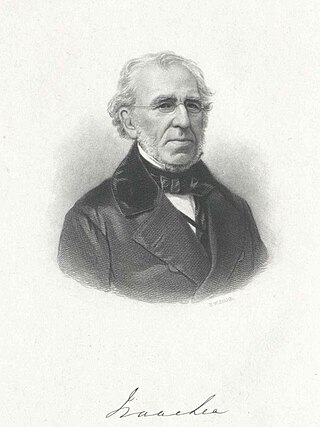
Isaac Lea was an American publisher, conchologist and geologist. He was a partner in the publishing businesses Matthew Carey & Sons; Carey, Lea & Carey; Carey, Lea & Blanchard; and Lea & Blanchard.
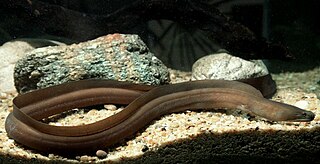
The slender giant moray or Gangetic moray, Strophidon sathete, is the longest member of the family of moray eels. It is in the genus Strophidon. The longest recorded specimen was caught in 1927, on the Maroochy River in Queensland; it measured 3.94 metres (12.9 ft) This species is characterized by an elongated body, as well as brownish-grey dorsal coloration which pales towards the venter.
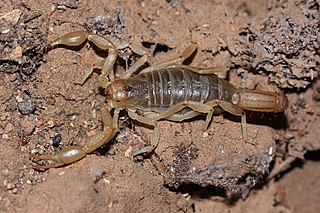
Paravaejovis spinigerus, commonly known as the stripe-tailed scorpion or devil scorpion, is a species of scorpion in the family Vaejovidae. It is found in the south-western United States and north-western Mexico.

Oenopota levidensis is a species of sea snail, a marine gastropod mollusk in the family Mangeliidae.
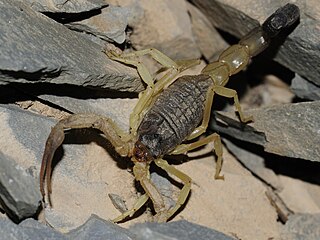
Hottentotta is a genus of scorpions of the family Buthidae. It is distributed widely across Africa, except for most of the Sahara desert. Species in the genus also occur in the Middle East, the Arabian Peninsula, southeastern Turkey, Iraq, Iran, Afghanistan, Pakistan, India, Nepal, Cape Verde Islands, and Sri Lanka (introduced).
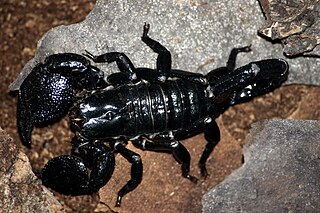
Pandinus is a genus of large scorpions belonging to the family Scorpionidae. It contains one of the most popular pet scorpions, the emperor scorpion . The genus is distributed across tropical Africa.
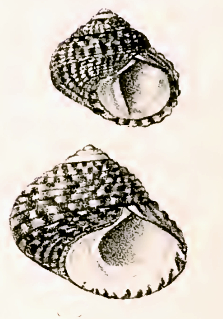
Diloma concameratum, common name the speckled periwinkle, is a species of sea snail, a marine gastropod mollusk in the family Trochidae, the top snails.

Clanculus aloysii is a species of sea snail, a marine gastropod mollusk in the family Trochidae, the top snails.

Clanculus maugeri is a species of sea snail, a marine gastropod mollusk in the family Trochidae, the top snails.

Phasianotrochus apicinus, common name the pointed kelp shell, is a species of sea snail, a marine gastropod mollusk in the family Trochidae, the top snails.
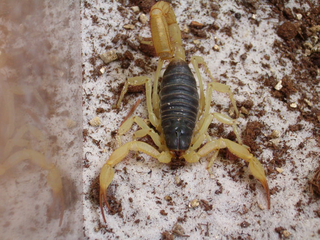
Hadrurus is a genus of scorpions which belongs to the family Hadruridae. They are found in sandy deserts and other xeric habitats in northwestern Mexico and in southwest United States. They are among the largest of all scorpion genera, only surpassed by Hadogenes, Pandinus, Heterometrus and Hoffmannihadrurus.

Marita compta is a species of sea snail, a marine gastropod mollusk in the family Mangeliidae.

Pseudodaphnella tincta is a species of sea snail, a marine gastropod mollusk in the family Raphitomidae.
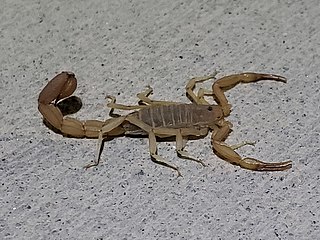
Paravaejovis is a genus of scorpions in the family Vaejovidae. There are about 11 described species in the genus Paravaejovis.



















